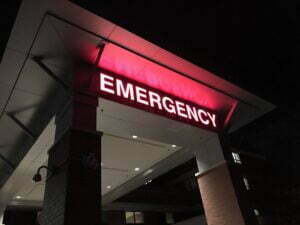The small intestine is harmed by celiac disease, a chronic immunological and digestive condition. Consuming gluten-containing foods causes the condition. The illness might prevent your body from absorbing all the nutrients it needs and result in long-lasting digestive issues. (1) Here are some food tips for your celiac disease diet.
Foods that You Can Eat When Managing Celiac Disease
You can eat the following foods, which are naturally gluten-free, if you have celiac disease:
- Most dairy products, including milk, cheese, and butter
- Veggies and fruits
- Fish and meat (although not breaded or battered)
- Potatoes
- Combined with rice noodles
- Flours free of gluten, such as those made from rice, corn, soy, and potatoes
Foods to Avoid When Managing Celiac Disease
According to Celiac Disease Foundation, food items contain gluten that celiac patients should stay away from includes spelt, farro, graham, Khorasan wheat, semolina, durum, and wheatberries are all varieties of wheat, including:
- Rye
- Barley
- Triticale
- Various forms of malt, such as malted milk, malt extract, and malt vinegar
- Alcoholic yeast
- Grain starch
Avoid Processed Foods When You Have Celiac Disease
The following list of processed foods that may contain gluten:
- Tins of soup
- Lettuce dressings
- Ketchup
- Mustard
- Sour cream
- Seasonings
- Icy dessert
- Sweets bars
- Prepared meats and sausages in cans
Other Food Tips:
- Read Labels Carefully
The key to a successful gluten-free diet is understanding how to read food labels. The front lines in the war against gluten are the grocery store aisles. Bring the following advice:
- If a food item contains fewer than 20 ppm (parts per million) of gluten, the manufacturer may claim it as gluten-free. It is, therefore, secure, but make sure you verify the component list.
- There are several names for gluten. Look for lesser-known derivatives like graham or malt flavors in ingredient lists instead of the more prominent grains like wheat, barley, and rye.
- Gluten-free does not equate to wheat-free.
- Leave it out if you’re unsure. This adage is widely used when discussing gluten-free cuisine. Your health is the most important cracker.
- Labels won’t replace common sense. Keep in mind that inherently gluten-free goods, such as bottled water or green beans, may not necessarily be so labeled.
- Still uncertain? Dial the manufacturer of the food or visit their website. Keep on hand the SKU number from the scanner pattern for quick access.
- Avoid cross-contacts
Cross-contact happens when gluten-free food comes into contact with gluten-containing food. Ensure that only gluten-free meals are consumed at these household hotspots:
- Toasters
- Colanders
- A convection oven
- Sifters of flour
- Dishcloths and sponges
- Containers
- Utensils
- Pans, pots, and skillets
- Griddle, press, grill, and iron
- Fryers
- Cutting surfaces
- Your cupboard and refrigerator’s shelves
- Know hidden sources of gluten
You should also take into account additional, more covert sources of gluten, such as:
- Medication
- Supplements and vitamins
- Lip balm and lipstick
- Eucharistic wafers
- In restaurants, eggs (the celiac disease foundation notes that some restaurants add pancake batter to scrambled eggs.)
- You can handle the play dough before delivering it to your kids.
- Mouthwash and toothpaste
Takeaway
You must eliminate gluten-containing foods and beverages from your diet if you have celiac disease. A gluten-free diet can reduce celiac disease symptoms and repair minor intestine damage. Celiac disease patients must maintain a lifelong gluten-free diet.
READ MORE:
Remote Care Delivery for Patients with Celiac Disease During and After COVID-19
References
- Celiac Disease | NIDDK. (n.d.). National Institute of Diabetes and Digestive and Kidney Diseases; www.niddk.nih.gov. Retrieved July 20, 2022, from https://www.niddk.nih.gov/health-information/digestive-diseases/celiac-disease
- “Help Youth At Risk for ACEs |Violence Prevention|Injury Center|CDC.” Help Youth At Risk for ACEs |Violence Prevention|Injury Center|CDC, 6 Apr. 2022, www.cdc.gov/violenceprevention/aces/help-youth-at-risk.html.









